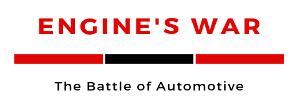The Porsche 911 GT3 RS. As of 1976, aspirated from 3 liter engine officiated under the back cover of the Porsche 911. He succeeded the 2.4 liter and 2.7 liter, before giving way in 1983 to a 3.2 liter . And so on to climb 3.4 liters and 3.8 liters for the more humble versions of the current generation of the 911 born in December 2011 (Type 991). This almost constant increase in the size of the 911 engines from the beginning of the model will officially end in 1963 at the Frankfurt Show in 2015 when under the pressure of international regulations that condemn manufacturers to track down any gram of carbon dioxide, famous sports car will return with a displacement of 3 liters a thirty-two years after abandoned.
To believe this Porsche, the inversion of the curve of the displacement of the famous 6 to flat should not hinder the elevation of those in power and torque nor fun. A promise that Porsche worldwide burn verify but which some prefer not to give faith. As proof, the rush seen around the world on the final copies of the Type 991, which will remain in history as the ultimate 911-aspirated engine.
The flat-six engine returns to a discontinued in 1984
In the 911 range, there was already Turbo; now, all models adopt a double turbine to force-feed them fresh air motor. However only the most powerful supercharged 911 may append to his number called "Turbo", just to preserve the prestige of the supercar, descending in a straight line from the legendary 930 Turbo 1974.
Moreover, the variable geometry is not placing on turbochargers new 911 Carrera and Carrera S 2016: technical refinement that introduced the world premiere of the 911 Turbo Type 997 in 2006 remains the prerogative of the 911 Turbo. Maybe someday. Surely, even. For if there is something we can not doubt is that the relentless pursuit of greater sobriety condemns the engine to use on the smaller engines (Porsche, everything is relative) introduced some refinements here on larger.
Indeed, even deprived of variable geometry turbine, the new "small" 911 3 liter should not suffer from response time, or even a speed range too small. Porsche announces a gain of 20 horsepower and 60 Nm for an average appetite down: some 370 horses for the new Carrera (450 Nm) and 420 hp for the Carrera S (500 Nm) despite a lower consumption of one liter (7 7 liters / 100 km for the Carrera S) and 0.8 liters for the Carrera (7.4 l / 100 km).
With 4.2 seconds and 3.9 seconds respectively, the new Porsche 911 Carrera and Carrera S takes 0.2 seconds less than their predecessors to atmospheric engines to go from 0 to 100 km / h. Proof that their manufacturer able to compensate the increase which is likely to result from the enrichment equipment.
New: self steering rear axle optional on the Carrera S
If the new Porsche 911 is recognizable at first glance to her new back cover pierced with vertical louvers (rather than horizontal) or its door handles and its redesigned shields, we see less rear lights highlight and four headlamps incorporating LEDs.
Downright invisible is the arrival on the 911 Carrera S (against surcharge) on the rear axle self-steering released by the 991 Turbo and 991 GT3. In addition to increased stability in the fast curves and a great agility in addition the laces, this system led by electronics officially drops half a meter turning radius. To further facilitate maneuvers in town, muzzle can lift 40 millimeters at the touch of a button 5 seconds on the dashboard. No ramp will resist the new 911.
All new Porsche 911 Carrera and Carrera S will be delivered with the new generation of Porsche Communication Management including navigation and voice commands. We recognize this system connected to Google Earth and Google StreetView to its 7-inch touch screen sensitive to unusual finger movements popularized by smartphones and tablets: tap, pinch and slide. Reproduce on the screen the contents of the iPhone remains a privilege charged additionally via Apple carplay functionality. Petty. As a consolation, the connected watches owners can remotely interrogate their Porsche.
Sign that the 911 runs with the times, it now alert the driver to the presence of vehicles in the blind spot, warned of an impending collision, coasting file when its Intelligent Cruise Control ( although optional) detects a slowdown in the flow of traffic. This system is even able to apply the brakes slightly downhill. The new Porsche will be marketed in Germany on December 12, 2015. The price (including VAT) in Germany vary between 96,605 euros for the new Porsche 911 Carrera to 123,856 euros for the new Porsche 911 Carrera S Cabriolet. Through 110,766 euros for the 911 Carrera S and 109 695 euros for the 911 Carrera Cabriolet.









EmoticonEmoticon